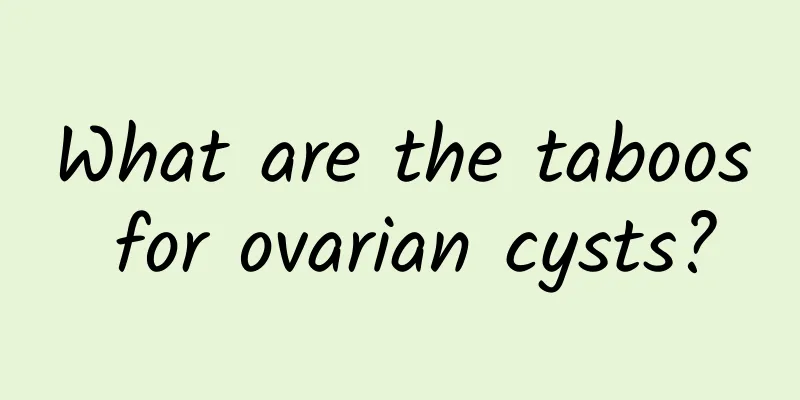What are the dietary precautions for functional uterine bleeding?

|
What are the dietary points for functional uterine bleeding? A scientific and reasonable diet is not only conducive to our own health, but also can play an auxiliary role in the treatment of diseases to a certain extent. Functional uterine bleeding is a common gynecological disease, referred to as blood supply. So, what are the dietary points for functional uterine bleeding? In traditional Chinese medicine, functional uterine bleeding belongs to the category of metrorrhagia. The so-called metrorrhagia refers to the sudden discharge of blood, while the bleeding refers to the continuous bleeding of a small amount. Metrorrhagia and bleeding can transform into each other. After metrorrhagia, the deficiency of qi and blood can turn into bleeding. If the bleeding continues for a long time, the disease may suddenly develop metrorrhagia. However, metrorrhagia refers to all vaginal bleeding diseases, so when combining traditional Chinese and Western medicine for treatment, it is necessary to check and exclude organic lesions before treating according to the principles of metrorrhagia to avoid confusion and delay treatment. 1. Eat more fresh vegetables and fruits. Many vegetables and fruits are rich in trace elements, which are very beneficial for replenishing energy and enhancing hematopoietic function after excessive blood loss. Such as spinach, rapeseed, cabbage, tomatoes, carrots, apples, pears, bananas, oranges, hawthorns, fresh dates, etc. These foods are not only rich in iron and copper, but also contain folic acid, vitamin C and carotene, which have a good effect on the treatment of anemia. 2. Supplement adequate protein. When functional bleeding occurs, excessive bleeding may cause anemia. Therefore, you should pay attention to protein supplementation. You can eat more animal protein, such as milk, eggs, lean meat, pork liver, etc., because these foods are rich in essential amino acids needed by the human body, and also contain vitamins A, B1, B2, B12, etc., which are important foods for the treatment of anemia. 3. Avoid fatty, sticky and indigestible foods such as fatty meat and glutinous rice. People with excess heat should avoid greasy, warming and tonic foods, as well as spicy, irritating substances and condiments such as chili peppers, wine, pepper, garlic, onions, ginger, etc. to avoid increasing menstrual blood volume. People with deficiency cold should avoid raw and cold fruits and vegetables, frozen drinks, etc. For adolescent patients with functional uterine bleeding, they need to increase nutrition to meet the needs of physical development, and should supplement protein, trace elements iron, copper, zinc, vitamin A, vitamin B, vitamin C, vitamin E, etc. These nutrients are not only needed for physical development, but also for the development of ovaries and gonads. |
<<: How long can you live with severe cervical erosion?
>>: How to prevent women from gaining weight after abortion
Recommend
How long do you need to rest after a miscarriage and what foods can help your body recover as soon as possible?
In real life, many female friends will choose to ...
Does a woman's endometrial thickening mean she is pregnant?
During early pregnancy, due to the influence of e...
How to regulate irregular menstruation? These dietary therapies can regulate irregular menstruation.
Many diseases such as irregular menstruation and ...
What is the most effective treatment for Bartholinitis?
There are many people around us who are often aff...
Find out the "hidden" cause of obesity! 3 big NGs to avoid
There must be a reason for gaining weight, but yo...
What are the dangers of abortion? There are 7 major dangers
Almost all obstetricians and gynecologists do not...
Lose weight and eat deliciously! Try the egg shrimp dish
Are weight loss diets necessarily monotonous, bor...
Can naked flower purple bead capsule treat pelvic inflammatory disease? It can also treat
After pelvic inflammatory disease occurs, you can...
What are the methods for checking menopause?
The so-called primary menopause refers to the sit...
Can congenital absence of vagina be completely cured?
Can congenital absence of vagina be completely cu...
How big is the uterine fibroid and how ...
Uterine fibroids are one of the most common benig...
Treatments for the three most common types of chronic adnexitis
Chronic adnexitis is a gynecological disease that...
What to do if the pain from Bartholinitis subsides?
If pain is still felt after the swelling of Barth...
What are the diagnostic criteria for vulvar pruritus?
How to diagnose vulvar pruritus? This is of great...
How to treat cervicitis after childbirth? These methods can treat postpartum cervicitis
Postpartum cervicitis is a common gynecological d...









